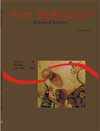Efeito da densidade de estocagem do quinguio, <em>Carassius auratus</em> L., 1758 (Osteichthyes, Cyprinidae), em suas fases iniciais de desenvolvimento
Resumo
Objetivou-se avaliar a influência da densidade de estocagem sobre o desenvolvimento do quinguio, Carassius auratus (Osteichthyes, Cyprinidae) em suas fases iniciais. Foram utilizados 300 larvas (Lt = 7,00 mm), distribuídas em 20 aquários (12-L). O delineamento experimental utilizado foi o inteiramente casualizado com quatro tratamentos (0,50; 1,00; 1,50 e 2,00 larvas/L) e cinco repetições. A alimentação utilizada foi à base de náuplios de Artemia sp. (fornecida de forma proporcional a densidade) e ração com 40% de proteína bruta (fornecida à vontade). Observou-se aumento linear (p<0,001) da biomassa por aquário em função dos níveis de densidade de estocagem, enquanto o comprimento total apresentou redução linear (p<0,001). Por outro lado, foi observado efeito quadrático (p<0,05) para o peso final médio, fator de condição (1,52) e uniformidade do lote (1,26), enquanto a taxa de sobrevivência não foi afetada (p>0,001) pelas diferentes densidades de estocagem utilizadas. Os valores dos parâmetros físico-químicos permaneceram nos níveis adequados para o cultivo de peixes, embora os valores de pH tenham apresentado redução linear (p<0,05) com o aumento da densidade de estocagem das larvas. Conclui-se que a densidade de estocagem influencia o desenvolvimento das larvas de quinguio levando à redução nos parâmetros de crescimento, entretanto, como a biomassa apresentou maiores valores com a densidade de 2,00 larvas/L, pode-se utilizar esta densidade para o cultivo do quinguio em suas fases iniciais de desenvolvimento.Downloads
DECLARAÇÃO DE ORIGINALIDADE E DIREITOS AUTORAIS
Declaro que o presente artigo é original, não tendo sido submetido à publicação em qualquer outro periódico nacional ou internacional, quer seja em parte ou em sua totalidade.
Os direitos autorais pertencem exclusivamente aos autores. Os direitos de licenciamento utilizados pelo periódico é a licença Creative Commons Attribution 4.0 (CC BY 4.0): são permitidos o compartilhamento (cópia e distribuição do material em qualqer meio ou formato) e adaptação (remix, transformação e criação de material a partir do conteúdo assim licenciado para quaisquer fins, inclusive comerciais.
Recomenda-se a leitura desse link para maiores informações sobre o tema: fornecimento de créditos e referências de forma correta, entre outros detalhes cruciais para uso adequado do material licenciado.












1.png)




3.png)













